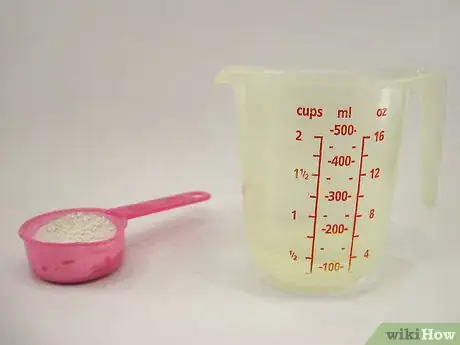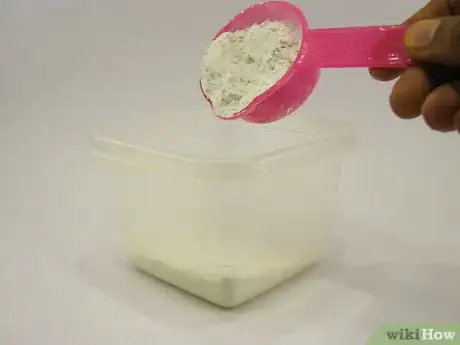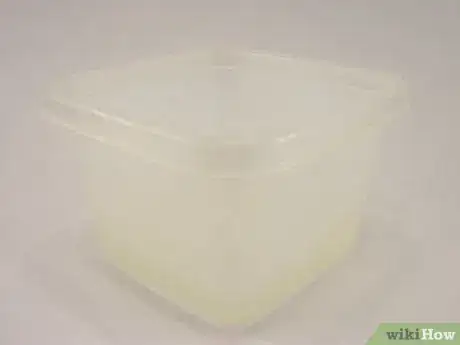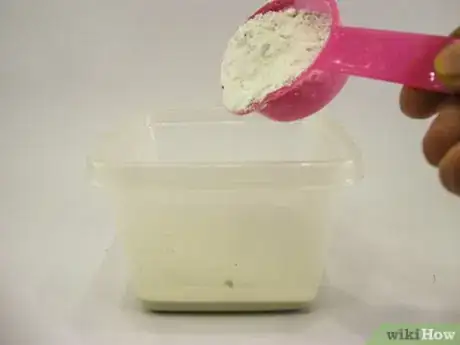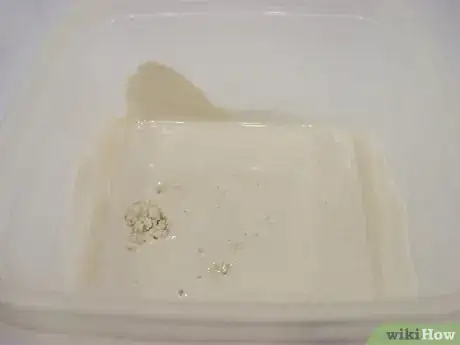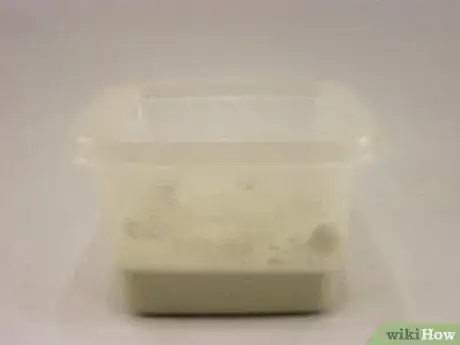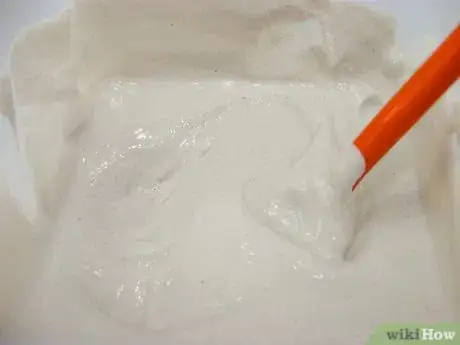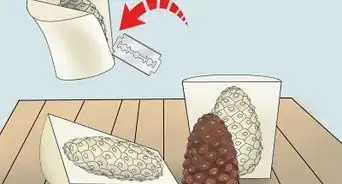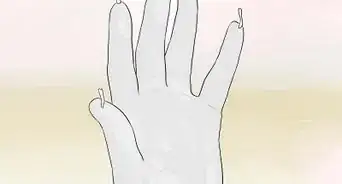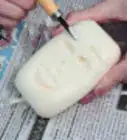X
wikiHow is a “wiki,” similar to Wikipedia, which means that many of our articles are co-written by multiple authors. To create this article, 14 people, some anonymous, worked to edit and improve it over time.
This article has been viewed 233,953 times.
Learn more...
Mixing plaster with a "rule of thumb" method doesn't require precise measurements. Sculptors typically use this method to mix small to moderate amounts of plaster (less than five gallons/22 liters) for molding and casting. The same instructions apply to all standard gypsum plaster products, such as Plaster of Paris, Hydrocal, Densité, etc.
Steps
-
1Estimate the amount of mixed plaster and silica your project requires. Remember it is 1/3 plaster, 1/3 silica flour and 1/3 water. Experience is the best guide here, so as a beginner you will just have to make your best guess, then mix extra to be sure you have enough. Use commonsense.[1]
-
2Premix plaster and silica flour.[2]Advertisement
-
3Pour clean, lukewarm water into an empty, flexible mixing container. A a standard two-gallon (7.5 liter) plastic bucket is a good container. The amount of water should be approximately one third the total amount of mixed plaster/silica you estimated in Step 1.[3]
-
4Add dry plaster and silica to the water. Gradually pick up handfuls and sift the powder through your fingers. This will break up any clumps, letting the powder fall into the water. Work quickly, but avoid dumping the plaster into the water. Don't stir or mix the combined water and plaster/silica.[4]
-
5Continue sifting plaster/silica into the water. Watch for it to start sinking slowly. Eventually some of the powder will stay on top of the water. As you add more plaster, distribute it to areas that still have water on top.
-
6Stop adding plaster/silica when there is no more standing water in the bucket. The surface of the combined water and plaster/silica should be mostly grayish in color, with some areas of white dry powder. Don't mix it yet![5]
-
7Let the bucket sit for a few minutes. Let it stand during the time that you make any final preparations for your project. If you are molding or casting with the plaster, this is a good time to double-check that you have applied the proper release agent to your pattern or mold.[6]
-
8NEVER mix the plaster with your hands. Plaster reaches a high temperature as it reacts chemically with the water and can cause serious burns!. Use a wooden spoon or similar instrument as one would use an egg beater: Reach down to the bottom of the container and use a side-to-side movement like an exaggerated "hello" wave.[7]
-
9Try to eliminate any lumps and break them up. When thoroughly mixed, the plaster is ready to use in your project.[8]
Advertisement
Community Q&A
-
QuestionCan I use Plaster of Paris to mold my face?
 Community AnswerIt would be a safer idea to make a silicone mold of your face first, then to fill that mold with plaster, if your plan is to make a casting. If you use plaster to make a mold, and something goes wrong, you could potentially hurt or suffocate yourself. Silicone, though not completely safe to use, is safer, and could be peeled away from skin much more easily. Please be sure to use silicone that is formulated for mold making, and for prolonged contact with skin. If you are serious about facial mold making, contacting someone who specializes in the field would be a great way to find out how to safely use plaster for this purpose.
Community AnswerIt would be a safer idea to make a silicone mold of your face first, then to fill that mold with plaster, if your plan is to make a casting. If you use plaster to make a mold, and something goes wrong, you could potentially hurt or suffocate yourself. Silicone, though not completely safe to use, is safer, and could be peeled away from skin much more easily. Please be sure to use silicone that is formulated for mold making, and for prolonged contact with skin. If you are serious about facial mold making, contacting someone who specializes in the field would be a great way to find out how to safely use plaster for this purpose. -
QuestionCan a model be carved out from a whole solid square made of plaster of Paris?
 Community AnswerYes, but you have to be careful, as the plaster of Paris square may break, and the sculpture will not be very durable.
Community AnswerYes, but you have to be careful, as the plaster of Paris square may break, and the sculpture will not be very durable. -
QuestionCan plaster of Paris be used for an outdoor sculpture?
 Community AnswerIt can, but the sculpture will not be very durable and could be damaged by weather conditions.
Community AnswerIt can, but the sculpture will not be very durable and could be damaged by weather conditions.
Advertisement
Warnings
- Avoid getting plaster on clothing or other items of value. It can be very difficult to remove from fabric and other porous surfaces. However, if there is an accident and it spills on fabric, it's worth trying to remove it. Don't automatically deem any soiled item ruined.⧼thumbs_response⧽
- Always wear a dust mask as the inhaled plaster dust particles will mix with fluid in your lungs and harden there. This is very dangerous and easily avoided.⧼thumbs_response⧽
- NEVER use hands to mix plaster or apply plaster to set directly on any body parts or skin- serious burns have occurred resulting in amputation of fingers and limbs.⧼thumbs_response⧽
- Never pour plaster down a sink or other drain. It can solidify and ruin the plumbing. Dispose of unused plaster in the trash. Rinse wet plaster off hands in a bucket of water before washing them in the sink.⧼thumbs_response⧽
Advertisement
Things You'll Need
- Plaster (dry powder)
- Source of clean water
- Plastic bucket or other flexible mixing container
- Project needing mixed plaster
References
- ↑ https://www.firstpalette.com/craft-recipe/mixing-plaster-of-paris.html
- ↑ https://ceramicartsnetwork.org/daily/pottery-making-techniques/making-ceramic-molds/how-to-mix-plaster-for-ceramic-molds/
- ↑ https://snapguide.com/guides/mix-plaster-for-sculpture/
- ↑ https://juxtamorph.com/the-plaster-faq-working-with-plaster/
- ↑ https://ceramicartsnetwork.org/daily/pottery-making-techniques/making-ceramic-molds/how-to-mix-plaster-for-ceramic-molds/
- ↑ https://www.gvsu.edu/arttech/plaster-mixing-calculator-13.htm
- ↑ https://juxtamorph.com/the-plaster-faq-working-with-plaster/
- ↑ https://ceramicartsnetwork.org/daily/pottery-making-techniques/making-ceramic-molds/how-to-mix-plaster-for-ceramic-molds/
About This Article
Advertisement
